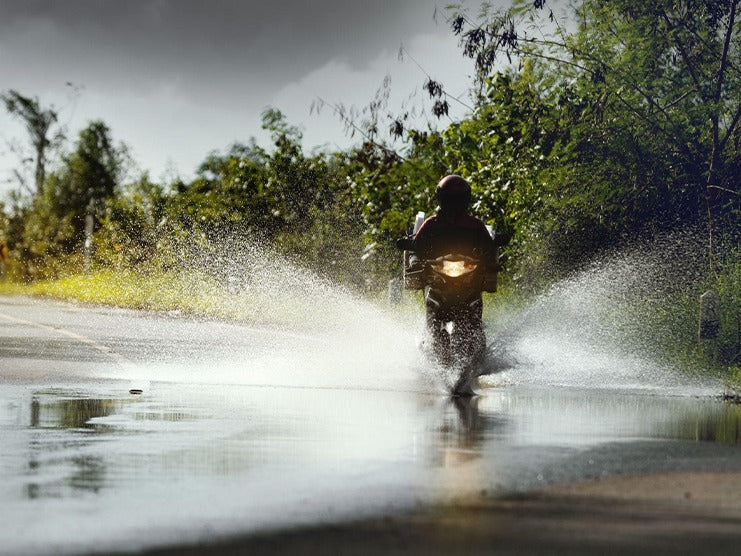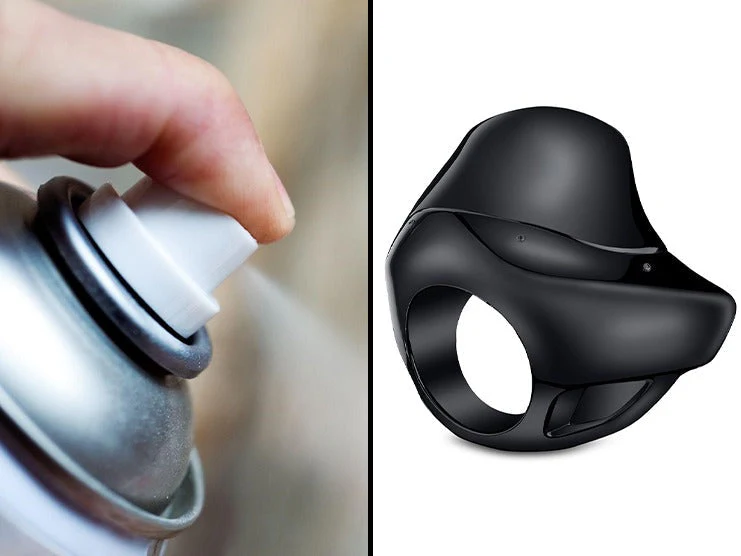A motorcycle fairing is a plastic part mounted on the front fork and fitted around the frame or handlebars. The primary function of motorcycle fairing is to improve aerodynamics, reduce drag, improve mileage, and produce better engine output. However, its secondary purpose is more appealing to riders. But many modern motorcycles feature more versatile fairings that offer optimal weather protection. From Harley Davidson’s batwing and shark-nosed fairings to Viking Bags aftermarket Strider and Derby fairings, moat modern fairings feature built-in windshield, vents, and wind deflectors that protect you from harsh weather conditions and guarantee comfort at highway speeds.
Table of Content
1. The Right Setting for a Motorcycle with Fairing
How useful a motorcycle fairing will be is often determined by the weather and road conditions. Since highway and urban settings can have different weather conditions, how helpful a fairing will be may differ:
1.1 Uses of a Motorcycle Fairing on Highways
On highways, you often ride your motorcycle at speeds between 55-70 mph, which can leave you vulnerable to strong winds. Also, when you ride towards a destination, whether another city, a wilderness area, or a popular tourist attraction, the temperature, wind speed, and weather conditions may change drastically. In these conditions, you need a feature that offers constant protection, like a motorcycle fairing.
Strong Wind
Fairings with tall windshields help deflect strong incoming winds that could cause you to lose control of your bike. With no wind blowing against your torso, you will feel little to no wind buffeting.
Hot Temperature
In hot temperatures, you can open the vents to let in some wind to help keep you cool. Controlled wind exposure will help keep your body from overheating and becoming dehydrated. Studies have shown that dehydrated riders are susceptible to fatigue and loss of concentration.
Cold Temperature
In cold temperatures, a wide fairing, such as the batwing fairing, will deflect wind over your head and shield your hands from the cold wind, preventing numbness and loss of sensation. If you don’t have heated grips, a fairing can offer adequate protection from the cold. Similarly, fairings help you preserve body heat by deflecting most incoming cold wind. Riding a naked bike on highways in frigid temperatures can result in frostbite and hypothermia.
Rain
Heavy downpours can affect visibility and make it difficult to maintain focus. Even with a rainproof jacket and helmet on, riding in the rain can be a miserable experience. Though a fairing will not keep you completely dry, it will offer some protection from the rain. If you install a full fairing, then your legs and feet should also remain somewhat dry. With rain being deflected over your head, you can open the helmet visor if it becomes foggy. The bright color of your fairing helps improve visibility, reducing the risk of severe accidents and minor collisions.
Reduces Pain and Exhaustion
Reduced wind exposure ensures better comfort when riding, provided they take frequent breaks, stay hydrated, and take “coffee naps” throughout their journey. Hence, motorcycle fairings can help reduce body aches and exhaustion often due to excessive wind exposure.
1.2 Uses of a Motorcycle Fairing on City Streets
When riding on city streets, you have to maintain a slow speed often ranging between 30-45 mph. At these speeds, you may not experience strong winds even during windy weather. Though riding in rain is not safe even in the city, you can easily park your bike under shade to wait out the rain. During hot temperatures, you can choose to ride without a helmet to prevent getting sweaty and dehydrated if the law permits it. Since you likely don’t spend more than a couple of hours on your motorbike when riding through a city, the risk of dehydration, fatigue, and exhaustion becomes reduced.
In winter, cold winds can cause numbness in your hands and feet. Wearing riding gear suited for wintry conditions can significantly reduce the risk of hypothermia. Some might argue that a motorcycle fairing is necessary to shield the rider from debris. However, dense traffic and frequent stop signs result in little risk of injury due to flying debris. Therefore, if you ride a naked bike and don’t travel long distances, then there is no point getting a fairing if your only concern is to shield yourself from bad weather conditions.
2. Takeaway
If you commute on a motorcycle year round, you likely will not need a motorcycle fairing. But if you enjoy traveling on the freeway frequently, then a fairing will be beneficial in extreme weather conditions. However, it would require getting a full fairing designed for touring motorcycles. This is because sportbike fairings are more for aesthetics than wind resistance. Instead of picking the fairing that fits the latest trend, install a motorcycle fairing that best suits your riding needs. You also need to consider whether you are capable of maintaining a motorcycle fairing since they can be easily scratched, damaged, and broken. Replacing a motorcycle fairing can be expensive while restoring paint requires a lot of time and effort. Due to its large surface area, a full fairing is even more difficult to maintain. However, the full fairing is easy to remove if you prefer to use your motorcycle for commutes and adventure rides.













Leave a comment
All comments are moderated before being published.
This site is protected by hCaptcha and the hCaptcha Privacy Policy and Terms of Service apply.